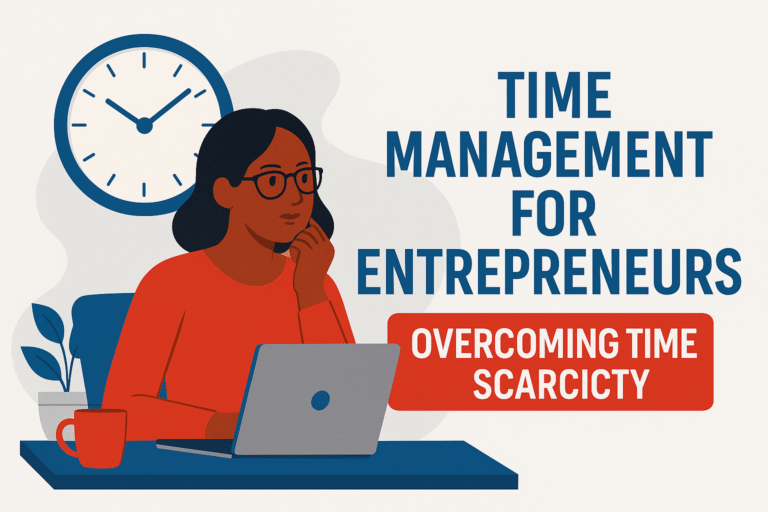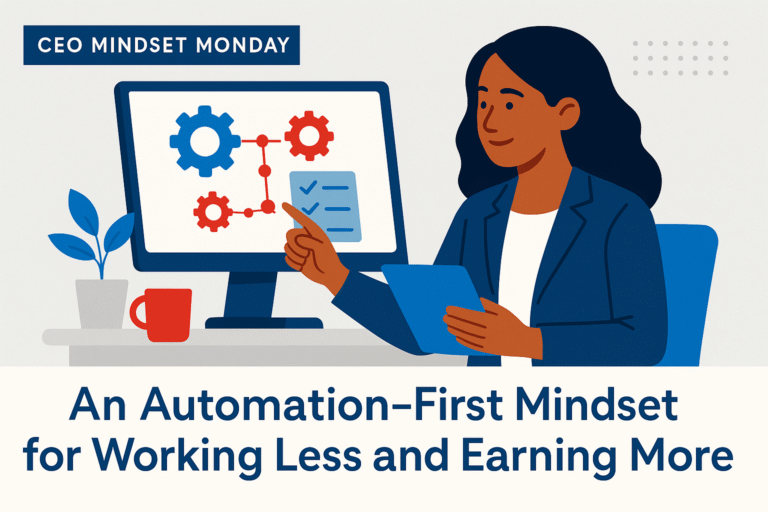CEO Mindset Monday
I’ll be honest: my tunnel vision mentality got me through some hard seasons. When days drew out and it felt like I was short on time, energy, and every task rested on my shoulders—it helped me block out the noise and just move.
There’s something powerful about having that intense, narrow focus. The kind that lets you tune out distractions, ignore doubts, and just keep going. When you’re in survival mode, that kind of focus can feel like your only way forward.

In the early stages of entrepreneurship, tunnel vision mentality can feel like a necessity. Sometimes it is. But building something sustainable means knowing when to look up—because movement alone isn’t the same as progress.
When Tunnel Vision Works for You
There’s a time and place for single-minded execution.
In the early days of launching Backbone America, I was working full-time, raising my son as a single mom, and building my business in stolen pockets of time—late nights, weekends, and between responsibilities. I didn’t have the luxury of “exploring all the options.” I needed to pick a direction and move.
Tunnel vision helped me push through. I buckled down and finished core deliverables, even when all I wanted to do is relax on the sofa. I tuned out doubts and ignored outside opinions that didn’t align with where I was headed. Above all, I forced myself to do the hard, unglamorous tasks I wanted to pretend didn’t exist.
But ignore it, and it’ll go away doesn’t work when you’re building a business.
I know I’m not the only one with these thoughts and feelings. There are so many entrepreneurs out there grinding through days, weeks, even months of building something from nothing—while wondering if they’re already stretched too thin. If that’s where you are right now, hear this: your tunnel vision mentality isn’t wrong. It’s carried you here. It’s fuel.
But fuel only gets you so far if you don’t check the map.
When Tunnel Vision Turns Toxic

As I moved deeper into the work, I stopped seeing the signs. I clung to strategies that no longer fit. I brushed off feedback that didn’t match my plan. And sadly, I burned through precious energy trying to “finish” a version of success I had quietly outgrown.
In the back of my mind, I could hear it: You’re investing time and money into a strategy that isn’t working. But the hardheaded part of me kept pushing: You’ve come this far—might as well see it through.
It’s the same reason I live in Vegas and tend to avoid the slot machines. I know myself. I struggle to stop, even when I know I should walk away.
Over time, I’ve learned to listen more closely to that quiet inner voice that says adapt, not cling. I’ve gotten better at seeking feedback—and actually hearing it. But it’s taken practice.
You can train yourself to recognize the signs of when the tunnel vision mentality becomes harmful. What for these signs:
You reject new data that contradicts your plan without reflection
You keep building without reassessing your direction
You confuse hard work with meaningful progress
And maybe the hardest part? That tunnel vision can steer you so far off course that you start to forget what’s even possible.
Letting Go Doesn’t Mean You Failed

That wasn’t the point. My goal was freedom. Financial independence. Space to live and build on my terms. Not to cling to a plan just because I had started it.
As business owners, it’s important that we align our mindset to what success really meant.
It reminded me of how I used to read books. For the longest time, I couldn’t put one down—even if I wasn’t enjoying it. I felt like I had to get to the end. It used to take me a day or two to fly through a novel. But then one day, I hit a wall. I was stuck in a book I didn’t even like—for weeks…until I finally gave myself permission to let it go.
Running your business in the wrong direction is that same kind of trap. Pushing to “see it through” doesn’t help if the thing you’re finishing doesn’t move you toward your actual vision.
Having a CEO mindset means it’s okay to step back and pivot. It doesn’t say finish at all costs. It says: learn, adapt, and shift.
The mindset shift isn’t about proving anything. It’s about coming back to your why—and being honest enough to choose differently.
Tools That Help You Rebalance
When I feel myself slipping too deep into the tunnel vision mindset, I turn to a few grounding practices. Maybe they’ll help you, too.

- Weekly reviews: These show me what’s actually working—and what’s quietly draining me. They hold me accountable without judgment. I ask: What’s still aligned? What needs to shift?
- SMART Goals: I revisit the goals I’ve set—not just to measure progress, but to make sure they still reflect where I’m headed. Tunnel vision can keep me stuck on a goal that’s already expired. These check-ins give me a chance to adapt and realign.
- Accountability tools: Whether it’s a vision board, a project map, or a trusted sounding board—I use external tools to reflect what I might not be seeing internally.
If you’re at a place where you’ve been running hard—but aren’t sure if you’re still running in the right direction—this is your cue to pause. Not quit. Just pause, reflect, and recalibrate.
Final Thoughts: Use Tunnel Vision Mentality Wisely
Tunnel vision mentality isn’t bad. But it’s not neutral, either.
It’s easy to confuse it with focus. But the truth is, tunnel vision often creeps in when we’re overwhelmed, uncertain, or too committed to an old version of success. And once we’re in it, it can feel almost natural—until we look up and realize we’ve lost the bigger picture.
You don’t need to eliminate tunnel vision. However, it’s important to recognize when you’re in it. Pause when the pressure builds. Reflect when the plan stops making sense. Give yourself permission to shift—not because you failed, but because you’re paying attention.
Self-awareness is the real skill here. That’s how you build a business with direction—not just movement.
Try this: At the end of this week, do a quick gut-check:
Where have I been locked in without re-evaluating?
What’s still aligned—and what just feels like momentum for momentum’s sake?
You don’t need a full reset. Just enough awareness to stay in control of where you’re going.







